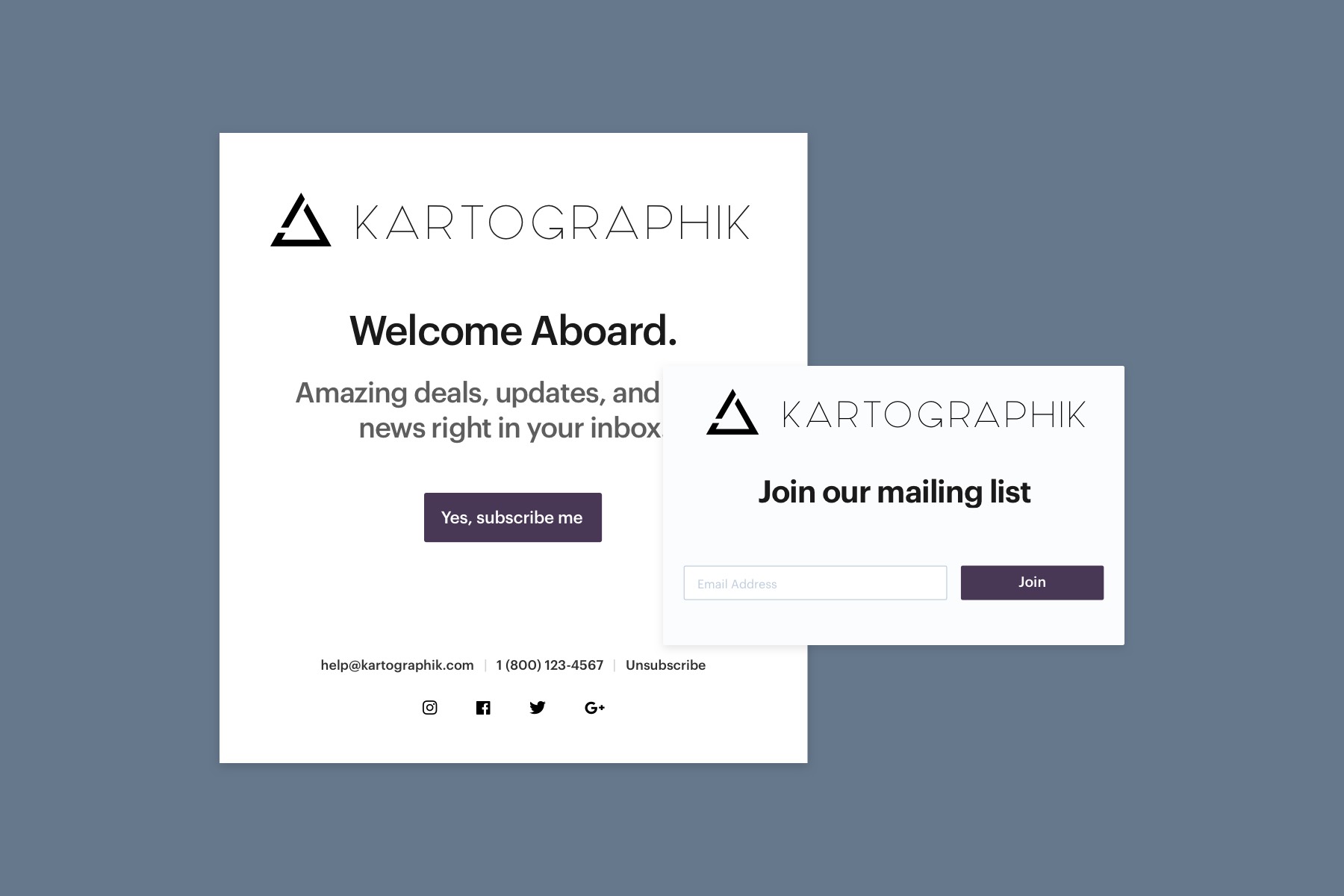Chapter 3
The Money Is In the Mailing List

Building an engaged subscriber list is one of the most important aspects of email marketing. Taking the time to grow your email list the right way, and not renting, buying, or sharing lists, will reap you long-term benefits. Below are 6 strategies that will help you build and maintain an engaged email marketing list.
Best practices to grow and nurture your list
Create a landing page to collect email addresses pre-launch: The sooner you start collecting emails the better. Even before you are ready to launch your website, you should set up a coming soon landing page whose sole purpose is to gather emails for a product or business that will be launching soon. The best coming soon landing pages focus on one primary objective - getting people to sign up before launch.
Here are some tips for a well-designed, high-converting landing page:
Make the first call to action clear: The sign up area should be distinctly visible from the rest of the page. Only collect the information you absolutely need. The more fields in a form, the less likely your visitors are to complete it. Ideally, an email address should be all you ask for. Include an incentive. People like to know that they are getting something out of giving up their email address. You can even use early access as an incentive for signing up. Use outgoing links sparingly. Anything that takes your visitors away from the page before they have completed the goal of getting them to sign-up is an unnecessary distraction, even if it's to your blog or Facebook page.
Capture email addresses using pop ups, banners, and newsletter forms: Once your site is live, you should continue to capture email addresses of visitors when they come to your site. You can use different calls to action, such as a email signup popup or banner, or newsletter form, on your homepage. You can include them in your top navigation, in the footer, and on the sidebars to keep it visible to visitors at all times. Offer a coupon or some other reward to encourage and incentivize visitors to join your mailing list.
Don't forget about your blog: Your blog may be one of the most visited areas of your site, so it’s another great place to include a popup or newsletter form to capture email addresses.
Collect Contacts in Person: Bring an iPad to events such as at your Farmer's Market stand, pop-up shops,or other events, and ask people to sign up for your email list in person. Be sure to have them enter and submit their own information to show active consent.
Send a Welcome Email: Once people have signed up, send them a welcome email. The welcome email is where you can push them to your blog, a longer video, or to a survey you want them to fill out. The welcome email sets the tone for every email delivered to your subscribers’ inboxes thereafter. So be sure to start off on the right foot by keeping your email well branded, friendly, and helpful.
Send out the right number of emails for your business: Did you know that 86% of consumers would like to receive promotional emails from companies they do business with at least monthly, and 15% would like to get them daily (Statista, 2015)? When determining the cadence of your email campaigns, make sure to send relevant, timely, and informative content that is valuable to your contact list. This can include monthly newsletters, upcoming events, special sales, and product announcements.
What NOT to do to when growing your list
Email marketing is NOT just a numbers game. Contrary to what you may think, more email addresses does not equal more opens and clicks.
Don't: Scrape, Buy, Rent, or Borrow Lists: Whatever you do, don’t fall to the temptation of purchasing an email list. This will have a long term negative impact on your sender reputation and will tarnish your brand and cause big problems later by impacting email deliverability (more on this later). Sending unexpected (i.e. spam) email to recipients who have not opted into your emails almost ensures your emails land in the spam folder.